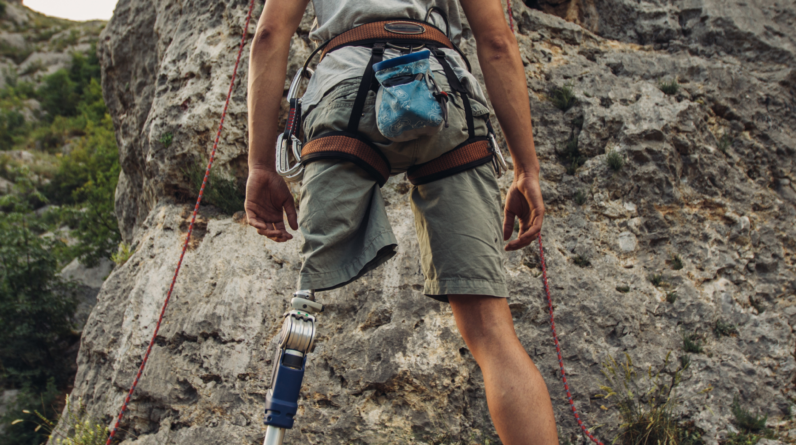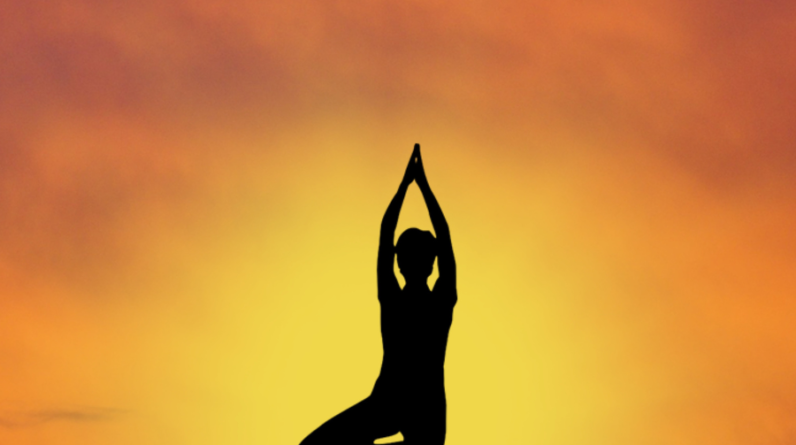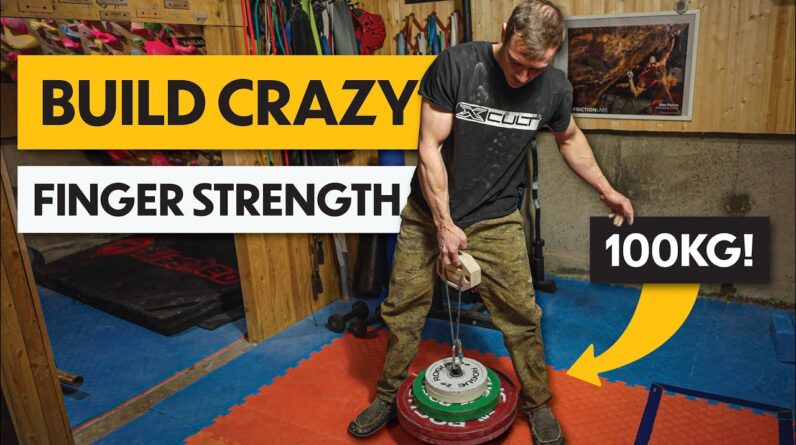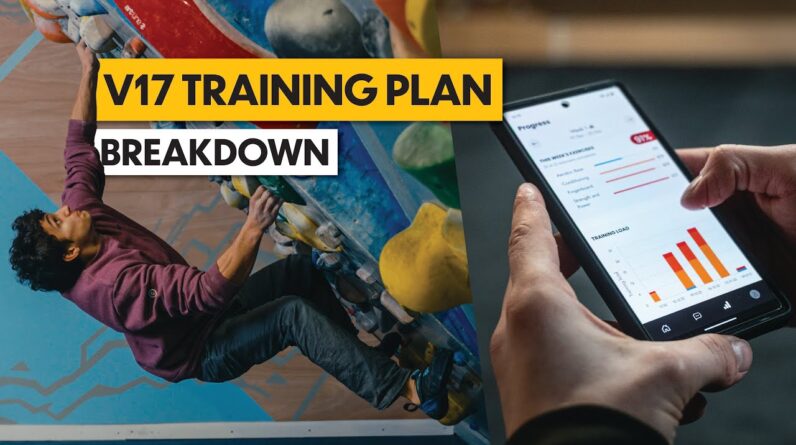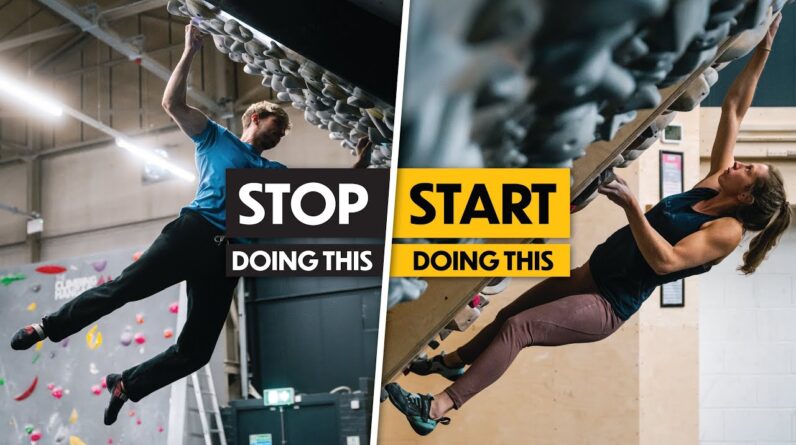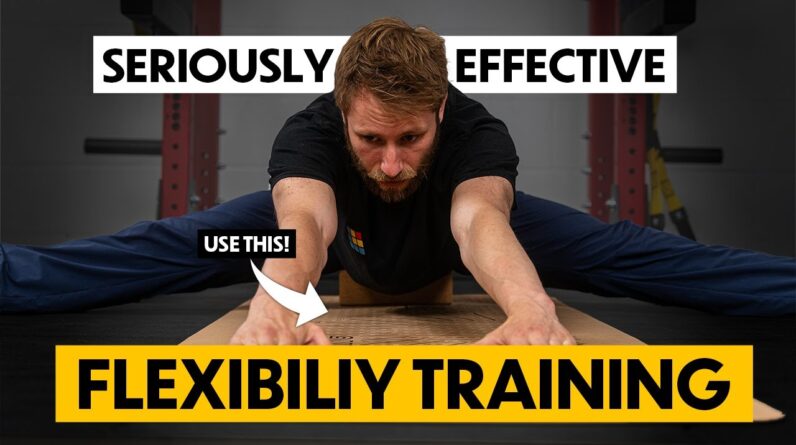
How to hangboard for strength? What grips and edge size? How long should you hang? One arm or two? You need to know the answers to these questions and we’ve got you covered! In this episode of our Fundamentals Series we cover the big questions in hangboard training and give you two fundamental training sessions every climbing will need if serious about training.
Fingerboarding is undoubtedly one of the Most specific exercises you can do for Climbing but there’s so much information Out there where do you start so today we Are back to the fundamental series and We’re giving you all the tools you need To take your finger strength to the next Level [Music] Ollie’s coming today because ollie has Been testing fingers for the last 10 Years and he knows a thing or two about Fingerboarding so ollie talk us through Fingerboarding yeah i’ve been lucky Enough to be working with some of the Best athletes over the last 10 years That’s in the uk and abroad and by Testing so many athletes you get to see All the little nuances in fingerboarding And finger strength down to finger size And what they actually do when they grip In the holds so i’ll go through a load Of basics and then we’ll explain the Differences [Music] So edge depth size the depth of the edge Or the hole that you’re going to be Training on here at lattice we use a 20mm edge a lot of the time and that’s Because we use it in testing and Training the reason why we chose that Depth is it on average covers one finger Pad depth so that’s where you get this First crease in your finger we find it
Applies itself really well to indoor Climbing and outdoor climbing and a lot Of the different grip position types if You’re trying to use a smaller edge like Going outside and using really small Crimps you can train on a smaller edges So micro edges but you want to try and Bring this in later into your training And when you’re more experienced using a Larger edge depth like a 20mm edge is Actually pretty applicable all around And will still train you for those small Edges using something bigger it’s good To get stronger forearms but it’s not Going to apply itself to the climbing Wall quite as well [Music] So joint angle we’re talking about Pretty much how your fingers look when They’re holding a fingerboard We often say that half crimp is king and The reason for that is it uses a lot Less friction and it puts your joints And your forearm muscles in sort of the Worst biomechanical position which means You have to be a lot stronger to hold Those grip positions however as you’re Beginning your fingerboard journey you Can use different grip positions so Slightly more open or slightly more Closed without a thumb wrap so not in Full crimp the main thing is when you’re Doing this type of training is look Around you what everyone else is doing
And there’ll be a lot of variety in the Looks of people’s hands when they’re Fingerboarding so you need to work out What’s comfortable for you and try and Work out what makes the biggest strength Gains towards your goals if you’re going To go pocket climbing then you need to Start using pockets in your fingerboard Training if you’re going to be using Really small edges like we said before Then you need to start building that Into your strength training as well [Music] So how many fingers should you use when You’re fingerboarding well the easy Answer is most of the time you’re gonna Be using four fingers like i said 20 mil Edge half crimp gets you a long way in Climbing so four fingers in that Position is a great start As i said previously if you’ve got any Specific goals such as using pockets you Do want to start opening the hand up and It’s almost a learning effect of getting Used to those grip positions if you go From just using a four finger half crimp You can get quite a tight hand and then When you try and use a pocket it’ll feel Quite uncomfortable it’s like doing a New movement or technique so try and Build that in as a bit of a practice if You don’t need to use that or you’re not Aiming to get better at those positions Then you can just use a general variety
Starting off with that four finger grip Position [Music] So how long should we actually hang for Well there’s a massive variety in the Types of sessions you can do out there But usually we’re looking at dead Hanging or max hanging so just hanging From the board for around 5 seconds to 30 seconds on each tank the variety in There comes from the intensity that You’re using and what you’re actually Aiming to achieve so generally The shorter hangs are going to be a much Higher intensity because you’re going to Be reaching failure or close to failure At a much shorter duration whilst the Endurance of a longer hang so going up To around 30 seconds means the intensity Will be a bit lower Generally we say it’s really good to Vary this throughout the year so you get Multiple stimulus but if you’re looking For a bit of a gold standard again Around 10 seconds is a really good place To start [Music] So should you hang on one arm or two Arms so generally i’m just going to say Two arms is pretty much good for most of The athletes that i’ve worked with over The years and this is really high level Athletes as well the reason why you Change to one arm is you work into
Something very specific or you’re Finding the amount of weight that you’re Adding to your body so additional weight It’s hanging on two arms is becoming Really uncomfortable Generally i would never give anyone one Arm fingerboarding unless they’re able To hang on two arms with 150 body weight So for example if i weighed 70 kilos Then i’d be an additional 35 kilos or More that i need to hang on two arms in Order to start thinking about one arm Training If you are reaching that level then you Still need to consider am i improving With the protocol i’ve got already if You are then don’t play with it you’re Already doing a good job So hanging position is something that is Quite important and the main thing that We can take away is just don’t be lazy With your shoulders so what you’re Looking for is you can have straight Arms or a slight bent arm as long as They’re not too bent and that’s a good Position for the elbow and for your Shoulders what you’re looking for is for Them to be engaged but not working Extremely hard and not fully relaxed so What that looks like is if you hang on a Bar Really really low fully relaxed and You’ll see your shoulders go up near Your ears and then you engage as high as
Possible so you’re trying to Create the biggest gap possible between Your ears and your shoulders and then You sink back down to somewhere in the Middle that’s usually a good place to Stop have a quick go by filming yourself And your phone and you’ll find that Position pretty comfortable the other Thing to keep a really good form is try And keep your abs and your bum Relatively contracted so keeping those Thumbs and tongues tight and that just Means that your body stays straight and You’re not doing all the work from your Lower back So we’re going to start with a max hang Training protocol So just to clarify that doesn’t mean max Hang is in you’re going to fail on each Rep or each set it means it’s maximum Strength training so it’ll be a really High intensity You can use a simple 10 second hang Protocol so you’re hanging on the Fingerboard for 10 seconds and i’d Recommend a four finger half print Position on a 20 mil edge like i said Earlier i’ve worked with loads of Clients over the years they’ve got a Really really high standard in climbing Just using this training protocol so if You start using it and you’re still Seeing gains week on week and month on Month then keep it up and it can take
You a long way What we’re going to do is 10 seconds of Hanging in that position with shoulders Engaged then you’re gonna rest for Around two to three minutes between each Set that’s going to make sure that you Have sufficient recovery between each Hanger A lot of people ask us why don’t you Rest for a lot longer well you can rest For a bit longer than that to make sure That you’re feeling ready for the next Hang and that’s totally fine if you feel You need a bit of extra time then just Put pause on the timer and you can make Sure that you rest until you’re ready to Go again we generally use that 2-3 Minutes because it means the training Session doesn’t go on for too long and It keeps the training into a concise Time period so what intensity should you Use you’re looking for around 80 to 90 Of your maximum effort you can find this Out by doing 100 maximum testing so Doing a testing protocol at the Beginning of a training cycle and i Wouldn’t recommend doing that more than Once every month or every couple of Months If you don’t want to do any testing or You want to adapt it within the training Cycle you can base it on ether level 10 Being an absolute maximum stay on the Fingerboard and you’re trying your
Absolute best to keep good form you want To use around 8 to 9 out of 10 in that Effort level scale which means you’re Walking away having kept good form and There’s a little bit left in the tank so One thing that a lot of people miss with Maximum strength training is not Recording the loads you’re being used And trying to increase it really slowly Week on week or month on month you will Have points of plateau and that’s Absolutely fine but just look at really Really small increments too many people Start a training protocol and try to Ramp up the weight really quickly and Then hit this plateau and it becomes a Little bit too stressful for fingers as You’re doing other training so i’d Really recommend is start lower than you Want and build up really slowly week on Week and that’ll keep the consistent Gains coming for much longer so for the Max hanging protocol you’re going to be Looking around six sets of max hangs and That doesn’t include your warm up so You’re going to build up really slowly And i do mean slowly over around four to Six sets starting at really low weight After you’ve already done a general Warm-up then you’re going to hit that Six sets of doing the intensity that you Really want to do which is the high load If you find that you’re starting to Fatigue too much throughout the session
It’s absolutely fine to do less sets Than that or drop the weight slightly The next protocol we’re going to look at Is repeaters so unlike max hangs where You’re going to do one hang and have a Long rest this time we’re going to do Multiple hangs with tiny rests in Between and then have a long set rest After that so what they’ll look like in This protocol is seven seconds of Hanging Three seconds of rest so it gives you Enough time to put your hands down maybe A quick shake and a chalk and then Hanging back for seven seconds you’re Gonna repeat this for one minute so That’s six times hang rest hang rest Then you’re gonna have a long rest Period after that of around three Minutes again This protocol is really good for Increasing your strength capacity so It’s still high intensity but because You’ve got to extend that hanging period On and off you’ve got to be able to Sustain that for the whole minute the Intensity you’ll use for this session Will vary massively from person to Person If you’re basing the intensity or the Load being used on that max hanging Testing session done at the beginning of The training cycle you’ll probably end Up using somewhere between 60 to 80 of
That maximum load however because the Intensity of this workout varies Massively from person to person i’d Personally recommend basing this on real World practice so that means have a go At the session and record the load being Used Like before each set you should finish With a little bit left in the tank so You’re not failing but you are trying Really really hard record the load being Used and adapt that depending on how you Found each set [Music] Okay so you’ve got two really Fundamental fingerboarding sessions but When do these fit into our training So the first thing is timing around our Fingerboard sessions a big mistake we Often see is people always doing their Fingerboarding after a massive climbing Session when they’re really fatigued but Remember for a lot of these especially Those max hangs the intent is building Maximum strength so you don’t want to do This in a fatigued state this gives a Really defined reason for why we will Place sessions like max hangs before a Climbing session so they can be done at Really high quality of course there’s a Caveat to this if you’re not familiar With these training sessions or you’re Doing quite high volume then you don’t Want to do it before a climbing session
Which is also going to include high Intensity climbing For things like repeater sessions or Long duration hangs these can be placed After a high intensity climbing session Because the intensity is lower and the Intent of them is often for building Strength endurance or endurance itself If the fingerboard session is relatively New to you then i would actually suggest Doing these in isolation not with your Climbing sessions just say that you give Time to break them in get familiar with Them and really allow for good recovery [Music] How often should we fingerboard well This is a bit of a it depends answer Generally if it’s a new session once a Week is going to be sufficient you can Also do fingerboarding more than once a Week twice maybe even three times a week But it depends on the style of Fingerboarding you might do one session Of max hangs and one sessions of Repeaters and this could be enough if You’ve been fingerboarding for a long Time or perhaps in the past few years Through lockdowns we’ve been stuck at Home many people have been Fingerboarding at least three or four Times a week because they’re not doing The amount of climbing just consider how Much training you’re doing on your Fingers in the climbing wall and then
How much supplemental work you can do on A fingerboard remember fingerboarding Doesn’t replace climbing and fingerboard Sessions should always be relatively Short because of how fixed and isolated They are on the fingers If you’re watching this video and you’ve Never fingerboarded before a big Question you might have is when do i Start fingerboarding there is no perfect Time to start or no defined point in Your climbing when fingerboarding is Most appropriate a general rule is that You want to spend the first months and Perhaps even years of your climbing Spending most of your time building your Skill development and you’re going to Gain a lot of your finger strength Simply from your climbing if you have a Good foundation in your climbing and Think that fingerboarding would be a Good supplemental exercise to you a Really good place to start is with Longer duration hangs at a slightly Lower intensity somewhere around 15 to 20 seconds or that repeater session this Will help develop the structures of the Fingers and forearms and help build a Really solid foundation for higher Intensity training that will come later On if you’re unsure you should always Talk to a coach because every case is Different this has been our Fingerboarding fundamentals if you
Learned something new or enjoyed this Video please don’t forget to like and Subscribe and we’ll see you next time [Music] You

